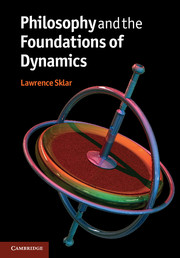Book contents
- Frontmatter
- Contents
- Chapter 1 Introduction
- Chapter 2 The pre-history of classical dynamics
- Chapter 3 The astronomical revolution
- Chapter 4 Precursors to Newtonian dynamics
- Chapter 5 The Newtonian synthesis
- Chapter 6 Philosophical aspects of the Newtonian synthesis
- Chapter 7 The history of statics
- Chapter 8 The development of dynamics after Newton
- Chapter 9 The “Newtonian” approach after Newton
- Chapter 10 From virtual work to Lagrange's equation
- Chapter 11 Extremal principles
- Chapter 12 Some philosophical reflections on explanation and theory
- Chapter 13 Conservation principles
- Chapter 14 Hamilton's equations
- Chapter 15 Canonical transformations, optical analogies and algebraic structures
- Chapter 16 The search for new foundations
- Chapter 17 New directions in the applications of dynamics
- Chapter 18 Spacetime formulations of Newtonian dynamics
- Chapter 19 Formalization: mass and force
- Chapter 20 Relationist dynamics
- Chapter 21 Modes of explanation
- Chapter 22 Retrospective and conclusions
- References
- Index
Chapter 9 - The “Newtonian” approach after Newton
Published online by Cambridge University Press: 05 December 2012
- Frontmatter
- Contents
- Chapter 1 Introduction
- Chapter 2 The pre-history of classical dynamics
- Chapter 3 The astronomical revolution
- Chapter 4 Precursors to Newtonian dynamics
- Chapter 5 The Newtonian synthesis
- Chapter 6 Philosophical aspects of the Newtonian synthesis
- Chapter 7 The history of statics
- Chapter 8 The development of dynamics after Newton
- Chapter 9 The “Newtonian” approach after Newton
- Chapter 10 From virtual work to Lagrange's equation
- Chapter 11 Extremal principles
- Chapter 12 Some philosophical reflections on explanation and theory
- Chapter 13 Conservation principles
- Chapter 14 Hamilton's equations
- Chapter 15 Canonical transformations, optical analogies and algebraic structures
- Chapter 16 The search for new foundations
- Chapter 17 New directions in the applications of dynamics
- Chapter 18 Spacetime formulations of Newtonian dynamics
- Chapter 19 Formalization: mass and force
- Chapter 20 Relationist dynamics
- Chapter 21 Modes of explanation
- Chapter 22 Retrospective and conclusions
- References
- Index
Summary
Kinematics, dynamics and constitutive equations
The development of the Newtonian approach required the sorting out of several distinct components needed for dynamically characterizing a system. In many of the approaches to specific problems, all of these constituent elements were used. But it took quite a while for the realization to sink in that a clear understanding of a general method for solving dynamical problems required the separation of the elements into components that presented themselves individually in the overt method of solution.
One component was kinematics. This encompasses the general principles for simply describing the motions of systems. Here the obvious fundamental concepts are those of space and time. Position, velocity and acceleration, as well as the notion of a time interval itself, are fundamental concepts. Geometry, and its generalization to take account of the element of time added to those of space, is the fundamental discipline needed.
One of the earliest great breakthroughs was the application of coordinate methods and algebraic manipulations of those coordinates to describe the kinematics of systems. Here Fermat and Descartes were the great innovators. We have already noted the advances achieved in the early eighteenth century. These were the application of the methods of the calculus, originally due to Newton and Leibniz, to generalize the algebraic methods, and the realization that many problems could be more easily dealt with if the coordinates were all referred to a single orthogonal coordinate system fixed in one state of motion in space, rather than to relevant directions fixed by the components of the system to be described.
- Type
- Chapter
- Information
- Philosophy and the Foundations of Dynamics , pp. 89 - 95Publisher: Cambridge University PressPrint publication year: 2012



